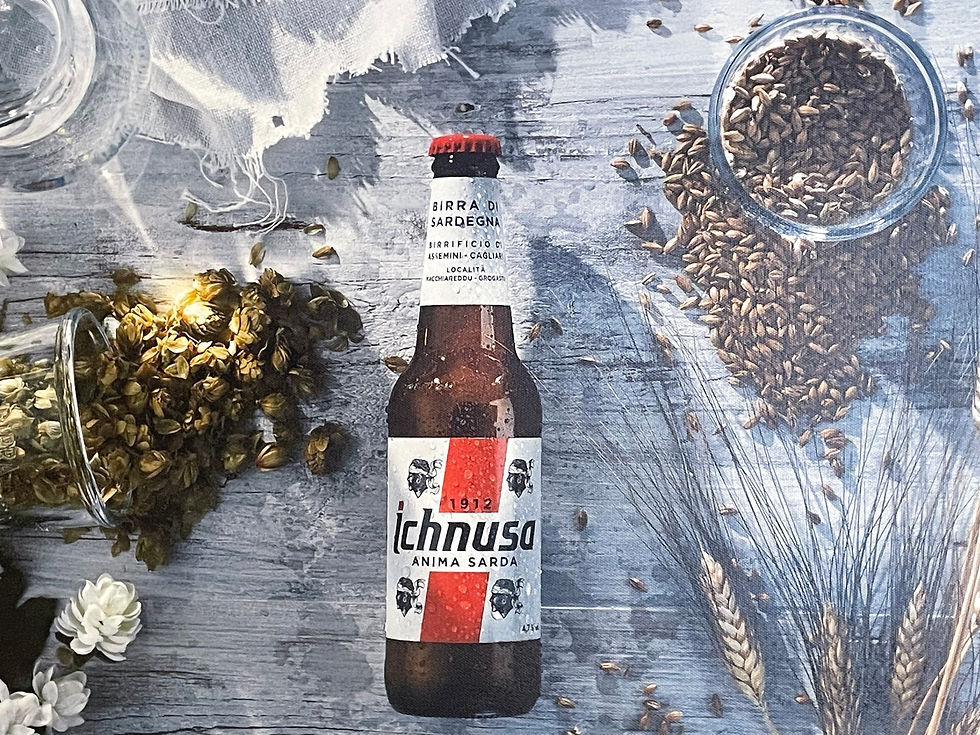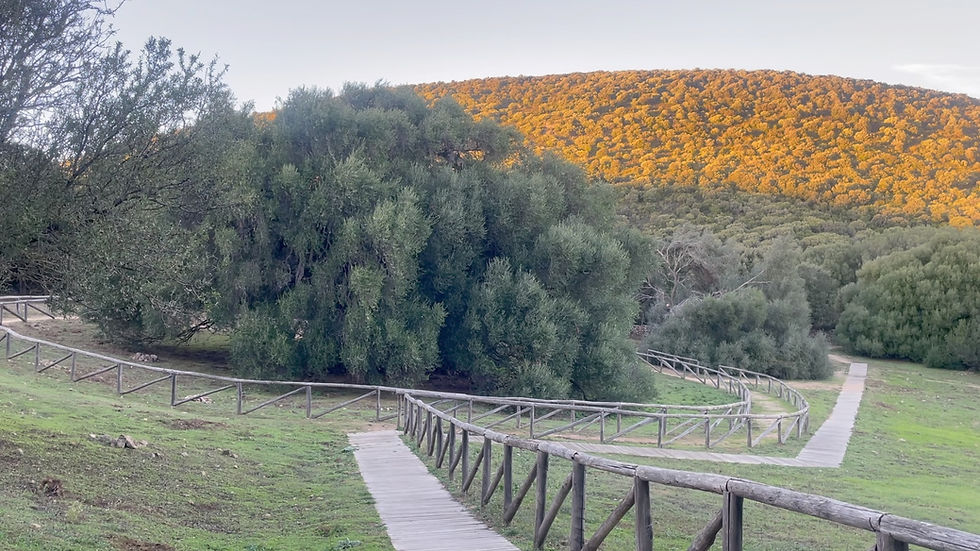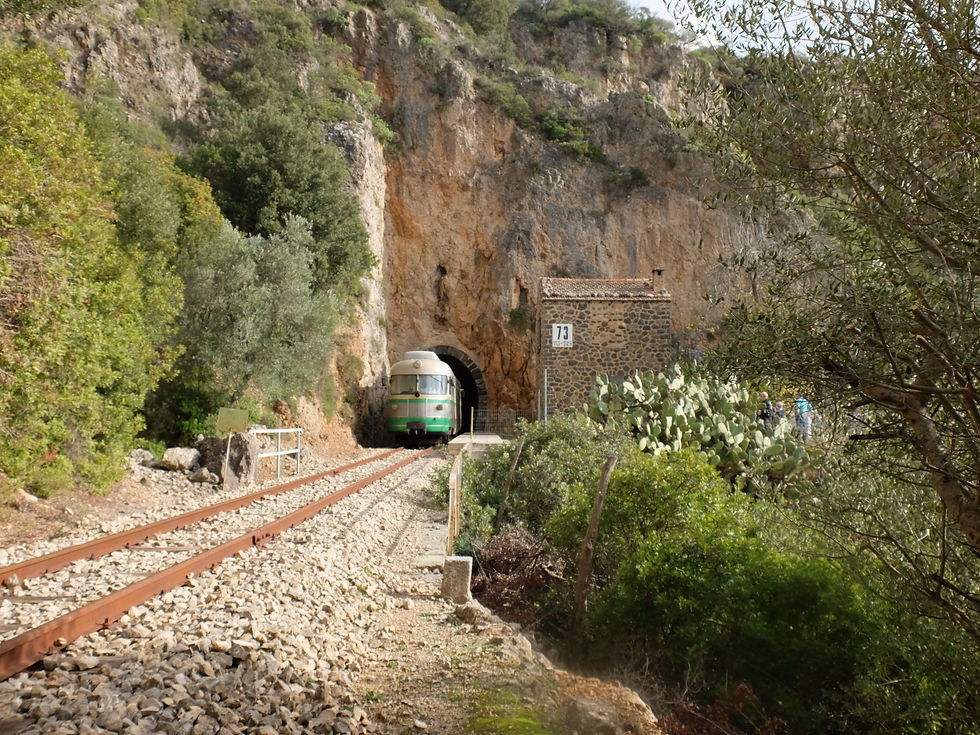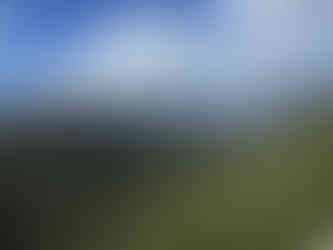1. It’s full of mountains 👆 – the highest is 6,000ft. And they are just as breathtaking as the beaches 👇
2. Sardinia is the SECOND LARGEST island in the Med’ at 170 miles long by 90 miles wide. Sicily beats it… but only just!

3. Sardinia wasn’t always called Sardinia 👆. Greek legend has it that Zeus put his big foot in the sea here and created an island called Ichnusa (Greek for footstep). The name lives on in Sardinia’s best-known beer👌.
4. The island has been continuously inhabited by ‘mankind’ and our ancient upright relatives for around 250,000 years. The first to set up home could have walked to Corsica, which was joined to Sardinia at the time.

5. Forget Egypt for archaeological riches. You fall over them in Sardinia👆. For such a comparatively small piece of land, it has an ‘unbelievable’ (that’s actually UNESCO’s word for it) number of remains, evidence of all the different nomadic tribes and full-blown civilisations to have developed there. The most impressive were the Nuraghic people, who had a sophisticated culture up and running from around 1700BC. They were pretty big influencers in the Med’ at the time… but who’s ever heard of them beyond Sardinia? So far, archaeologists have discovered 12,000 monumental and architectural structures: more than 800 megalithic burial sites known as Giant’s Tombs; in excess of 7,000 nuraghi (distinctive, stone-hewn towers that are unique to Sardinia); and around 2,500 prehistoric villages on the island. You can stumble on a big chunk of ancient history every 2.5 sq kilometers!
Thanks to Nuraghi Tours Experience for the image of the Nuraghe Arrubiu (the red nuraghe) near Orroli.

6. There are 1.6million people living in Sardinia. And 3 million sheep 👆. This one provides milk for the wonderful, multi award-winning Erkiles Dairy 👇 (hi Giovanni!) near Olzai in central Sardinia

7. Pecorino Romano – one of the world’s most famous cheeses – isn’t from Rome. It’s from Sardinia. The word Romano refers to the method (taught by the Romans), not the place. Ninety per cent of the Pecorino Romano the world eats has been produced in Sardinia.

8. The oldest olive tree in Europe is here 👆. Overlooking the stunning manmade Lake Liscia 👇, not far from the once-bustling little town of Luras. It’s been dated to between 1,000 and 2,000 BC and is the grandma in a group of three – a male specimen that’s a mere 2,000 years old, and ‘junior’, who’s only 500. The S’Ozzastru (which just means THE olive tree in the Sardinian language) is still fruiting. It came third in the Europe Tree of the Year award in 2024, and the town has plans to cement its status… so watch this space.

9. A Welshman built Sardinia’s railways 👇. Benjamin Piercy a civil engineer and railway fanatic from mid-Wales took over the project to lay 250 miles of track when the authorities couldn’t find anyone in Italy who could guarantee to get the job done on time – or at the right price. Piercy, who’d worked with Isambard Kingdom Brunel and would go on to design much of the Welsh railway system, delivered both, building standard gauge lines to connect the main cities and narrow gauge over and through Sardinia’s mountainous interior. He started the project in 1862 and stayed until his death, 26 years later. With its distinctive independent language, mountain forests, mining industry, millions of sheep and separatist spirit, presumably Welshman Piercy felt very much at home. Using his engineer’s brain, he went on to help improve the island’s agriculture by introducing modern machinery and methods, including better livestock genetics. He became firm friends with Garibaldi and was generally regarded by the Sardinians as being a ‘good egg’. So much so that he was given one of Italy’s highest honours, the Commendatore of the Crown of Italy.

10. Sardinians have been making wine longer than anyone else in the Western Mediterranean. Nuraghic people were knocking back an early Cannonau (which later morphed into Ganache elsewhere in Europe) in 1500BC. We know because archaeologists unearthed a stone wine press in the Nuraghic village of Monte Zara, not far from Cagliari, which still had traces of the last juice in it. And in Cabras, they found evidence of vines being cultivated. A deep, cold store, dated to the same period, held large quantities of Vernaccia and Malvasia grape seeds. When you drink wine in Sardinia, you drink history. 👇



コメント